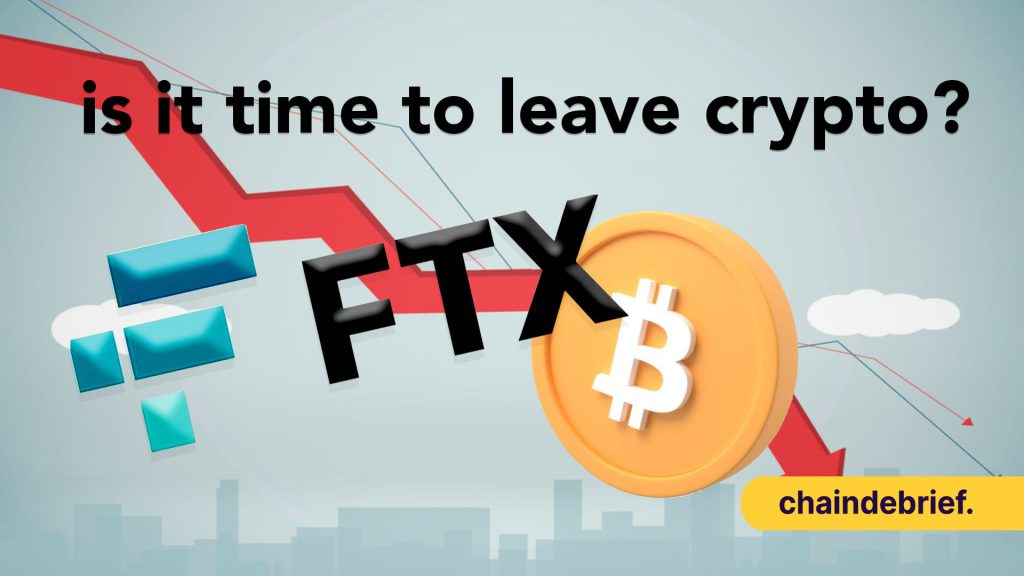2022 has been an eventful year for the crypto world – to say the least.
Following the implosion of Luna which wiped out $60 billion of market cap in the crypto world, as well as the collapse of Three Arrows Capital, wiping a further $18 billion, one would have thought that we have seen it all.
When news of FTX broke earlier this week that the second largest crypto exchange in the world is now bankrupt, it shook the confidence of even the most loyal believers of the crypto space.
– dodges impact from 69k
— b / cdxx.bnb 💣 (@rarebanks) November 9, 2022
– dodges Luna & Anchor collapse
– dodges Voyager and Celcius fuckery
– dodges the 3AC sell off
> gets rugged by ftx
The core of what happened was that FTX and its sister company Alameda used their own created tokens FTT as collateral to fund their expenses and purchases.
The turning point came when they could not sell their tokens to repay their debts when lenders came to collect their funds – lenders in this case being depositors in FTX who are trusting and use FTX as an exchange to purchase any cryptocurrencies.
Trust in crypto has also hit an all-time low, despite many thinking Luna/3AC was the bottom
— Chain Debrief (@ChainDebrief) November 9, 2022
With crypto investors moving out of the space, institutional trust fading, and even more negative sentiments, we may be in for the worst bear marketeverhttps://t.co/37NFUBAGBy
In each of the cases of Luna, 3AC and now FTX, the business became the founder and the greed of pursuing extra yield and taking on excessive unnecessary risks.
To many, FTX going bust was the last straw – if an exchange can misuse investors’ and traders’ funds, who else but ourselves can we trust.
Post-FTX implosion, the general sentiment is that many may be done with the space – with many saying that they will be taking a break from the world of crypto to recharge and recalibrate.
Anyone else feel like they’re done with this space
— Frank Chaparro (@fintechfrank) November 9, 2022
For those of us who are still sticking around, distrust of the web3.0 space will inevitably grow.
We were brought into the space because of the many wonders blockchain technology promised – the idea of a decentralized ledger leading to self custody and self sovereign identity.
To participate in the Web3.0 space, you need a centralized exchange to move your fiat on chain.
Let’s not talk about the fact that once you are on chain, there are bad actors trying to drain your Metamask wallet everyday, with cross bridges and protocols being hacked every other month – what can we look forward to now, given the huge amount of risks?
Bridges getting hacked
— Ckbytes.bit (@CkBytes) November 9, 2022
Protocols getting drained
Exchanges missuse user funds and go insolvent
You aren´t save anywhere in #crypto
The silver lining to all of this is that, only the quality exchanges and tokens will remain in the system.
Crypto will eventually recover from the fall of LUNA, 3AC, and FTX default, but it will take time. Transparency and regulation will be significant for the eventual winners in this space – major crypto exchanges such as Binance are already sharing plans on auditable Merkle tree proof-of-reserves.
While there are many bad actors even in the decentralized finance space, the implosion of FTX reiterates the value of DeFi and transparency, and in long term, it’s clear that the whole industry has to evolve to prioritize sustainable economics.
I also hope that the cases of Luna, 3AC and FTX will serve as a strong reminder to everyone that unsustainable ponzi-like yields will always come falling down, and that we probably wont be seeing the days of 3 or 4 digit APY yields anymore.
Also Read: Binance Walks Away, Who Can Save FTX Right Now?
[Editor’s Note: This article does not represent financial advice. Please do your research before investing.]
Featured Image Credit: Chain Debrief



































